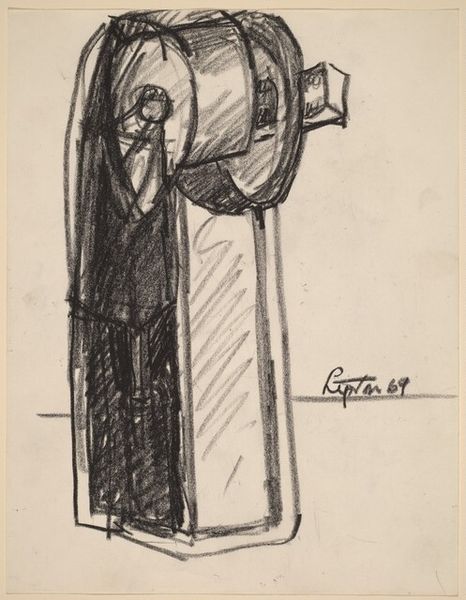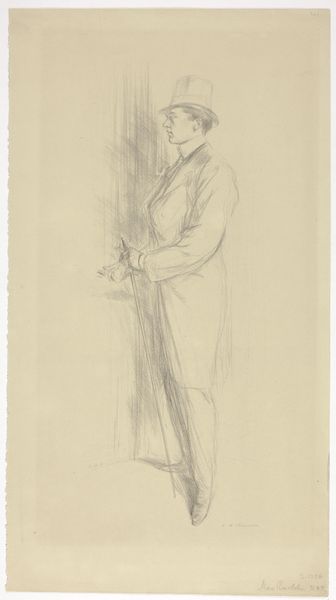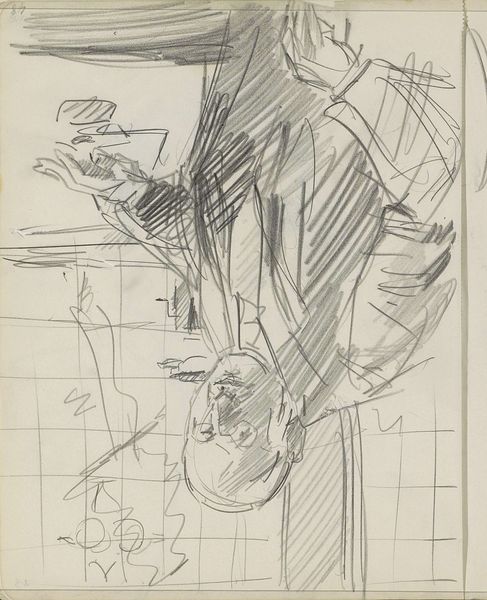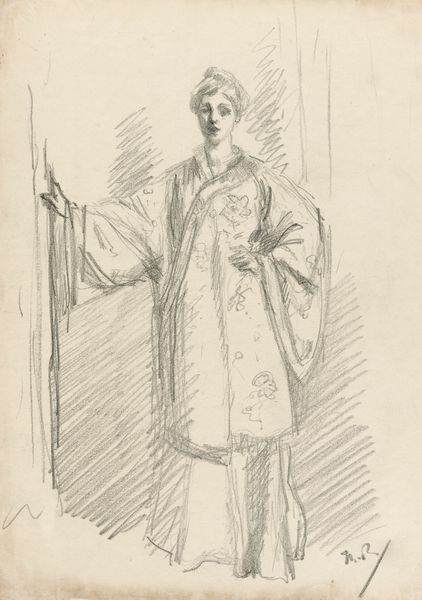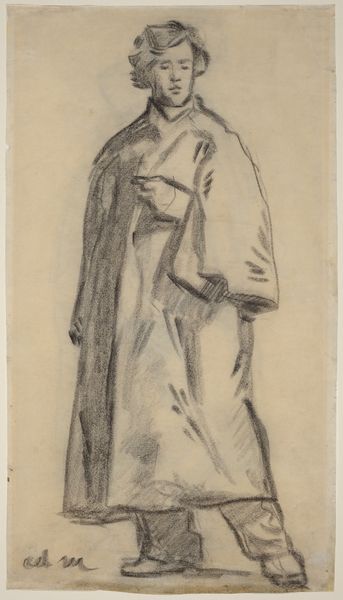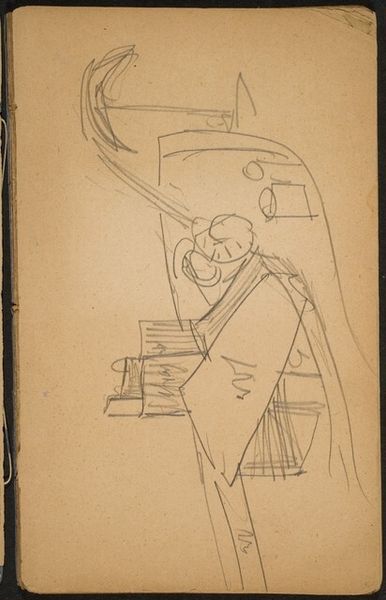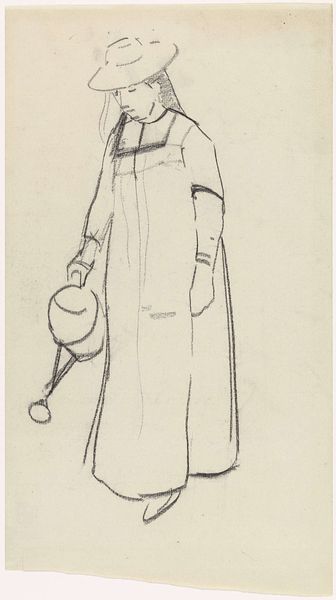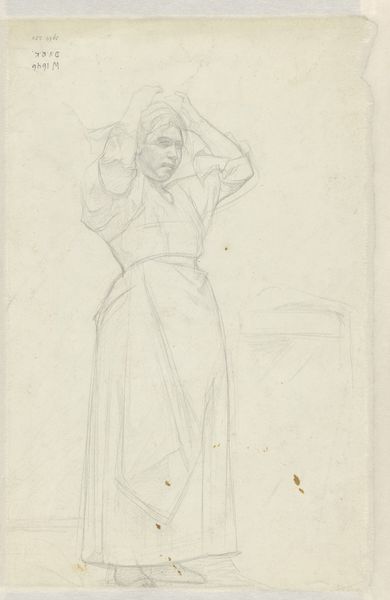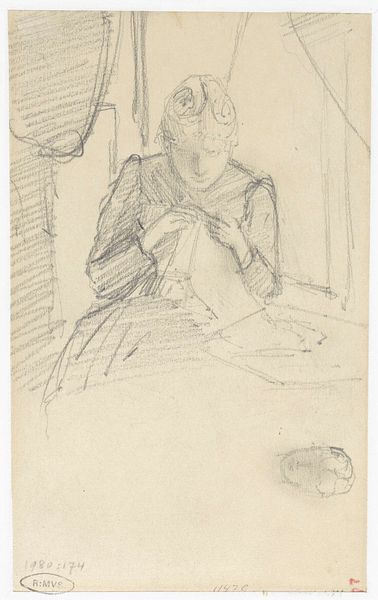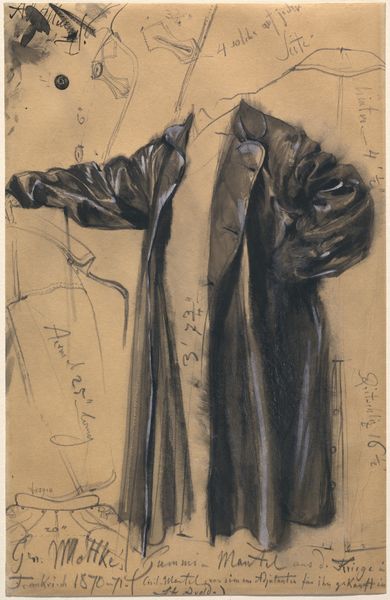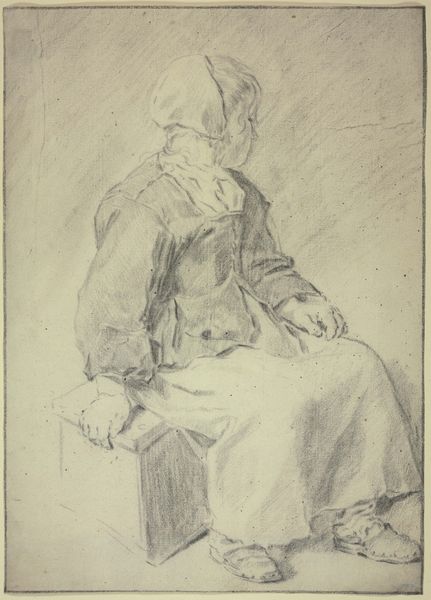
drawing, pencil
#
portrait
#
drawing
#
amateur sketch
#
light pencil work
#
quirky sketch
#
pencil sketch
#
figuration
#
personal sketchbook
#
idea generation sketch
#
sketchwork
#
detailed observational sketch
#
pencil
#
sketchbook drawing
#
realism
#
initial sketch
Dimensions: height 286 mm, width 225 mm
Copyright: Rijks Museum: Open Domain
Editor: This is "Studie van een staande boerin met een mand," or "Study of a Standing Farmer's Wife with a Basket," a pencil drawing by August Allebé, dating from between 1848 and 1907. It feels like a quick, almost journalistic sketch. What jumps out at you about this image? Curator: It's fascinating to consider the social context in which Allebé, as a well-established artist, would create such a study. It speaks to the increasing visibility, and perhaps romanticization, of rural life within urban artistic circles during the late 19th century. This "study" wasn’t necessarily meant for public display but for the artist's own exploration, like notes in a sketchbook. Editor: So, it's about Allebé understanding and processing a societal shift through his art? Curator: Precisely. Notice the inclusion of the woman’s traditional clothing, specifically the bonnet and the basket she carries. These elements served as cultural signifiers, emblems of rural authenticity. Are we meant to understand something more profound about her? Editor: That's really interesting! It reframes my understanding of the work. At first glance it feels spontaneous, but it actually engages with bigger cultural trends of the period. Curator: Exactly! Think of the rise of Realism in art and literature during that period. Artists aimed to depict the everyday realities of life, particularly of the working class, and to challenge traditional academic art that focused on historical or mythological subjects. What part do the woman's hands or her shoes play in it? Editor: I guess I had initially overlooked that the quickly drawn studies of her shoes and hands can contribute to understanding and constructing a social image. Curator: Ultimately, art reflects and shapes societal values. Understanding the forces at play helps us interpret pieces like this one. I see the need for the rising appreciation of folk. Editor: This conversation really highlighted the role of the artist in capturing broader societal themes.
Comments
No comments
Be the first to comment and join the conversation on the ultimate creative platform.
